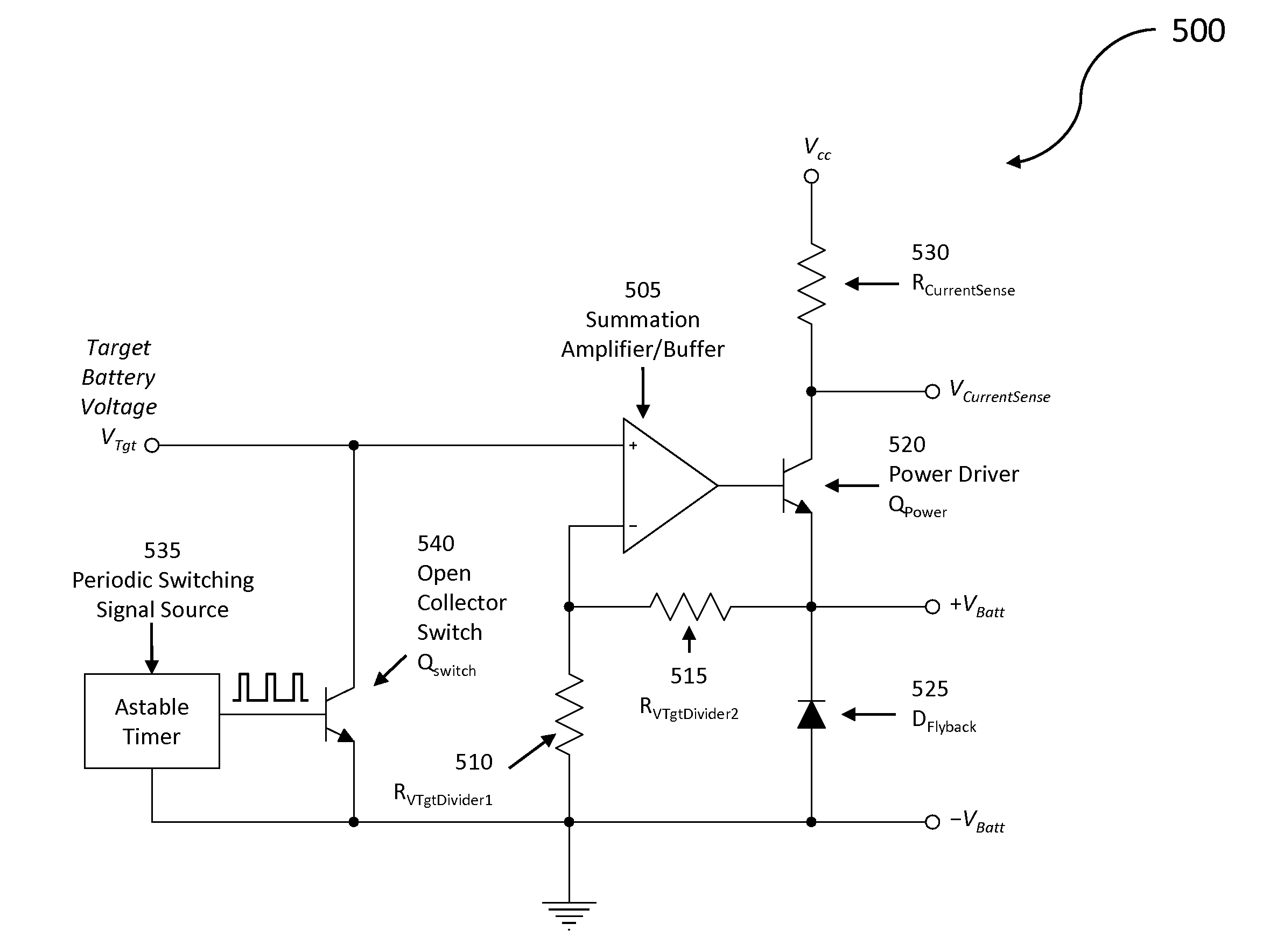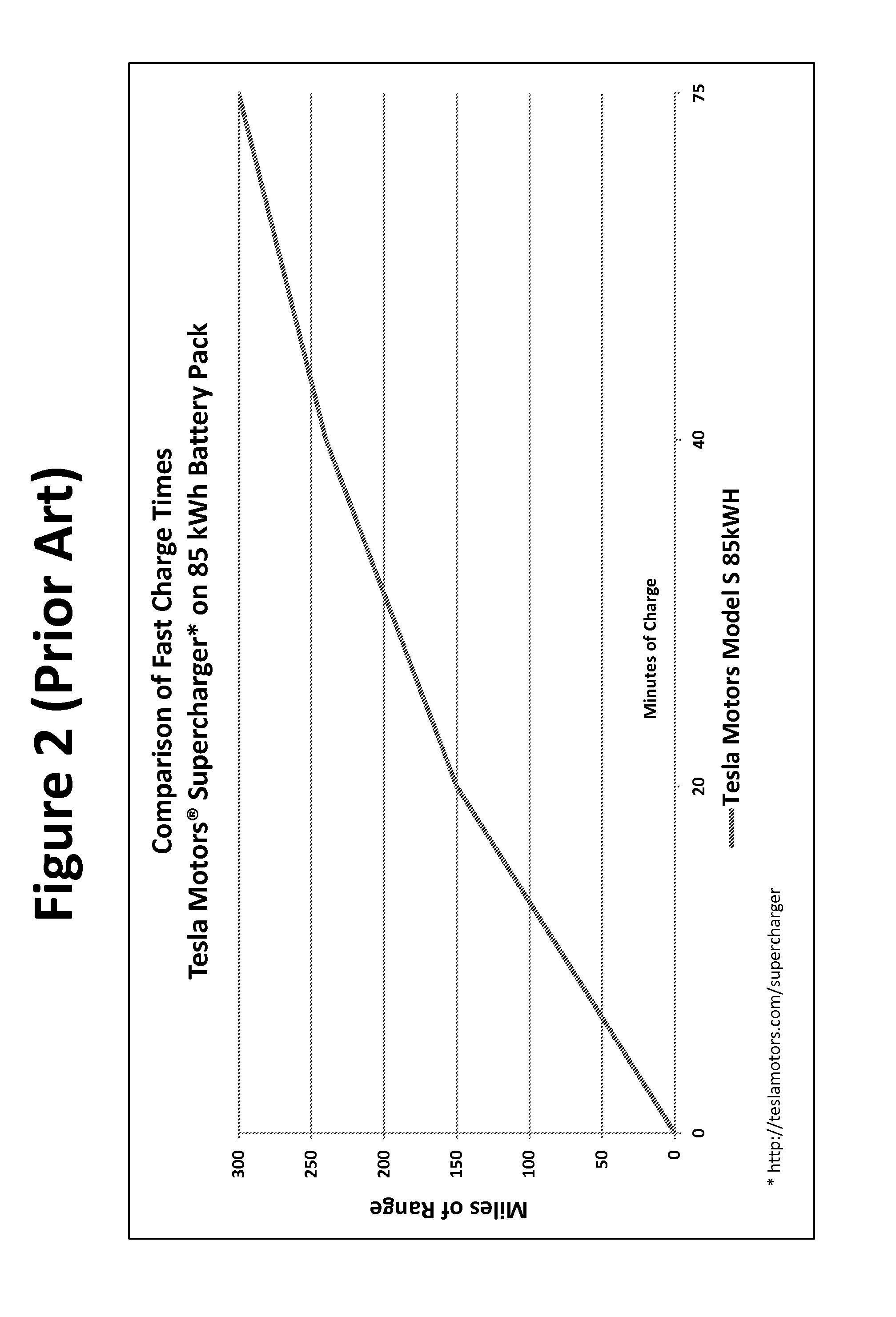Pulse battery charger methods and systems for improved charging of lithium ion batteries
a technology of lithium ion batteries and chargers, which is applied in the direction of battery/cell control arrangement, electric devices, battery/fuel cell propulsion, etc., can solve the problems of battery failure, battery charging process inadequacies, and battery failures, and achieve the effect of reducing the characteristic voltage response and high effective charging ra
- Summary
- Abstract
- Description
- Claims
- Application Information
AI Technical Summary
Benefits of technology
Problems solved by technology
Method used
Image
Examples
example 1b
[0144]A comparison charging process was conducted on the same type of cell as used in Example 1a having an about 3.0 V starting voltage. This battery was charged using CC / CV method applied with a 1 C constant current portion, followed by application of constant voltage applied when the voltage reached Vmax. A 1 C discharge was used to measure the capacity of the battery resulting from the charging step.
example 1
Results
[0145]As shown by comparison of FIGS. 11 and 12, the inventive charging process of Example 1a shows markedly different charging behavior vs. the conventional CC / CV charging of FIG. 12, as well that process shown generally in the prior art (see e.g., FIG. 1). In contrast to application of the conventional CC / CV charge, the inventive charging process allows application of a high charge rate during the entire charge period without the appearance of the typical voltage response that requires tapering of the charging rate when using conventional CC / CV charging. Significantly, in Example 1a the tested battery achieves 100% SOC in less than 1 hour with OCVinst (i.e., the lower line in FIG. 11 denoted “cell voltage”) substantially remaining below Vmax for this cell (4.2 V). When the battery charged with the inventive method was discharged, the capacity of this battery was virtually identical to that of the reference battery charged by a CC / CV process in Example 1b. These tests indica...
example 2b
[0148]A comparison CC / CV process was conducted on the same type of cell as used in Example 2a having an about 3.0 V starting voltage. This cell was charged using constant current applied at 2 C, followed by application of constant voltage applied when the voltage reached Vmax. A 1 C discharge was used to measure the capacity of the battery from charging.
PUM
 Login to View More
Login to View More Abstract
Description
Claims
Application Information
 Login to View More
Login to View More - R&D
- Intellectual Property
- Life Sciences
- Materials
- Tech Scout
- Unparalleled Data Quality
- Higher Quality Content
- 60% Fewer Hallucinations
Browse by: Latest US Patents, China's latest patents, Technical Efficacy Thesaurus, Application Domain, Technology Topic, Popular Technical Reports.
© 2025 PatSnap. All rights reserved.Legal|Privacy policy|Modern Slavery Act Transparency Statement|Sitemap|About US| Contact US: help@patsnap.com



